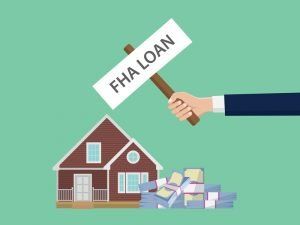FHA Rate Cut On Insurance Rates Rates Suspended

If you were planning on buying a home with a loan from the Federal Housing Authority (FHA), you may have been excited to hear about a planned rate cut announced by the US Department of Housing and Urban Development during the closing days of the Obama Administration. That cut applied the premiums on mortgage insurance, which protects your lender if you are unable to make your mortgage payments.
What Happened?
The annual insurance rate was supposed to drop from 0.85 percent of the mortgage to 0.60 percent on January 27. The rate drop was due to the recovery of the Mutual Mortgage Insurance Fund of the FHA. This fund has increased by $44 billion since 2012. The new premium would have been very close to the 0.55 percent that the FHA used to charge before the 2008 housing crash.
One of the first orders executed by the new administration was to suspend the cut indefinitely for reasons that are still unclear. The cut would have meant a savings of only $500 on a 30-year fixed-rate mortgage of $200,000.
The extra pocket money would’ve been a nice addition to any housing budget but probably would not have made that big a difference in loan qualification.
Fortunately, the action does not negate the overall value of obtaining an FHA loan.
Advantages
An FHA loan has several advantages if you’re a new homeowner.
• You only need a 3.5 percent down payment instead of 20 percent. This is more affordable than coming up with 20 percent that many private lenders require. Your down payment money can come from your own savings, of course, but you can also bring money in that a family member gives you as a gift or that comes from a down-payment assistance program at the local or state level.
• Your credit score can be as low as 580. If your score is between 500 and 579, you’ll need at least 10 percent down. Scores under 500 do not qualify for FHA loans. If you don’t know what your credit score is, your bank or credit card may tell you as part of its service. If not, you can still find out for free at Credit Karma. The site also provides free credit reports.
Keep in mind that the FHA is only an insurer, not a lender. You’ll still have to get your loan through an FHA-approved lender. The market is very competitive, so one lender may charge less interest than another. Even among lenders with the same rate, one may charge fewer points, which are the fees required to originate the loan. It pays to shop around.
Ratios
So that you don’t buy more home than you can afford, the FHA determines if you qualify for their loans by looking at your debt-to-income ratios. These numbers reveal how much debt you have relative to how much you make. There are two types and you can calculate them roughly for yourself.
• Mortgage Payment Expense to Effective Income. Add up the total monthly mortgage payment, including principle, interest, mortgage insurance, hazard insurance, escrow deposits for taxes, and other fees. Divide that by your gross monthly income. This ratio must be 31 percent or less.
• Total Fixed Payment to Effective Income. Add up the total mortgage payment as defined above and include all your monthly payments for loans and credit, such as student loans, car loans, credits, etc. Divide the total by your gross monthly income. This ratio must 43 percent or less.
Obviously, if you’re slightly over the ratio to qualify, one strategy is to reduce as much of your debt as possible until your ratio drops.











